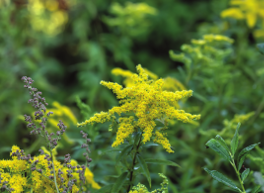
Whether you are a walker, runner, cyclist or golfer, you probably look forward to early fall, when the dog days of summer are behind us and temperatures become milder. Yet for the 23 million Americans allergic to ragweed, this time of year can be prime allergy season. Although we usually associate seasonal allergies with the spring, 17 species of ragweed in the United States bloom and produce a fine powder from August to November, usually peaking in mid-September.
Ragweed allergies can bring on the same symptoms as other pollen allergies, including sneezing, watery eyes, nasal congestion, headaches and an itchy throat. They can also aggravate asthma symptoms. If ragweed or other seasonal allergies get in the way of your normal fitness routine, consider the following:
- Consult an allergist/immunologist. A physician can determine the source of your allergic reaction, prescribe a course of treatment and make personalized recommendations for you.
- Breathe through your nose as much as possible. The nasal passages filter out irritants and pollutants and keep them from getting into your body.
- Check the pollen count for your area. If a local weather report shows high levels of pollen, avoid exercising outdoors. Pollen counts are usually highest between 5 a.m. and 10 a.m., and at dusk.
- Avoid areas with large amounts of allergens, such as fields and forests.
For many people, over-the-counter antihistamines provide relief from seasonal allergies. However, if your allergies prevent you from exercising outdoors, seek indoor exercising options. It might make sense to join a gym or an indoor pool so you can maintain your fitness during the months when outdoor allergens reach their height.
From aerobic machines to weights, we can develop a set of exercises that will help keep you in shape on those days and weeks when ragweed and other pollens keep you from exercising outdoors. That way, you can stay in shape while you breathe easily.
















